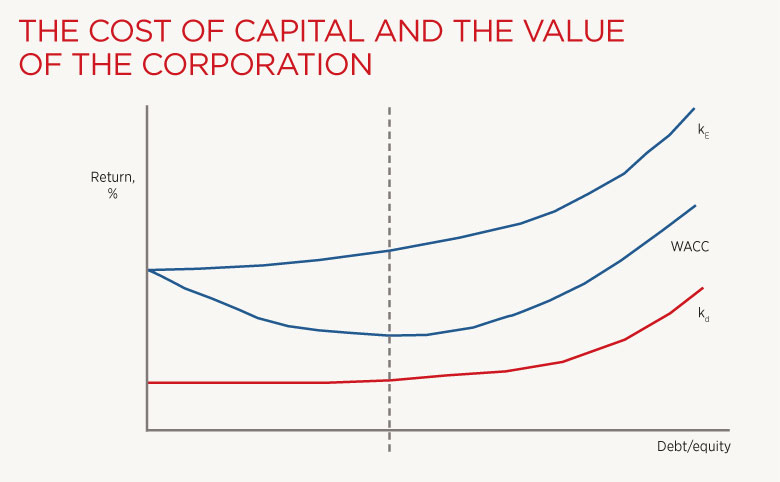
While it might sound theoretical, the concept of weighted average cost of capital (WACC) is very useful to finance managers and its application and limitations need to be understood.
Firstly, it is widely accepted that the value of a corporation (and therefore its value to shareholders) is the net present value (NPV) of its future cash flows, discounted at the firm’s WACC.
So companies seeking to maximise shareholder value have two primary aims: to enhance cash flows by increasing income and cutting costs; and to minimise the WACC (through optimising capital structure) by which those cash flows are discounted.
This increases the NPV of those cash flows, maximising the market value of the corporation.
The proportions of capital should always be based on the market values of debt and equity, not their book values
Secondly, financial strategy and optimal balance sheet structure can be identified through the calculation of a WACC at a range of gearing levels to formulate an optimal capital structure for the organisation. Note that while it is generally accepted that there is an optimal capital structure (in theory at least), where WACC can be minimised and the value of the company can be maximised, it is also generally accepted that the relationship between leverage and shareholder value is relatively flat around the optimum, meaning that exact calculation is less critical.
It is useful to view graphically how WACC alters as leverage changes. The classic picture seen here shows how WACC is high at low levels of leverage, but reaches an ‘optimum’ at the idealised WACC before rising quickly into the territory where financial distress (risk of bankruptcy) becomes a major factor.

The WACC calculation looks very straightforward, reflecting the weighting of debt and equity at their respective costs:

But there are a number of points to consider when calculating WACC:
The market capitalisation figure should always be used for equity – the balance sheet value of equity is usually a small fraction of this amount, and is of little relevance to shareholders.
While many firms use WACC in their design of financial strategy and project assessment, arguably the concept of multiples is prevalent in practice and pervades financial market language. Thus debt might be limited to 3 x EBITDA, an interest cover multiple or a cash flow cover multiple. Additionally, there are other models used in capital structure design, such as the pecking order theory (see note below).
Note: This is where companies prioritise financing from readily available sources, such as internal funding, and then move on to other sources that are harder to tap.
Sarah Boyce is associate director of education at the ACT
